Title
Couleurs désert – Carpet Art from MoroccoPosted In
ExhibitionDuration
02 September 2016 to 29 January 2017Venue
Museum BelleriveOpening Hours
Tuesday to Sunday 10.00 - 17.00Location
Telephone
+41 43 446 44 69| Detailed Information | |||||
|---|---|---|---|---|---|
| Title | Couleurs désert – Carpet Art from Morocco | Posted In | Exhibition | Duration | 02 September 2016 to 29 January 2017 |
| Venue | Museum Bellerive | Opening Hours | Tuesday to Sunday 10.00 - 17.00 | Location |
Höschgasse 3 8008 Zürich
Switzerland |
| Telephone | +41 43 446 44 69 | ||||
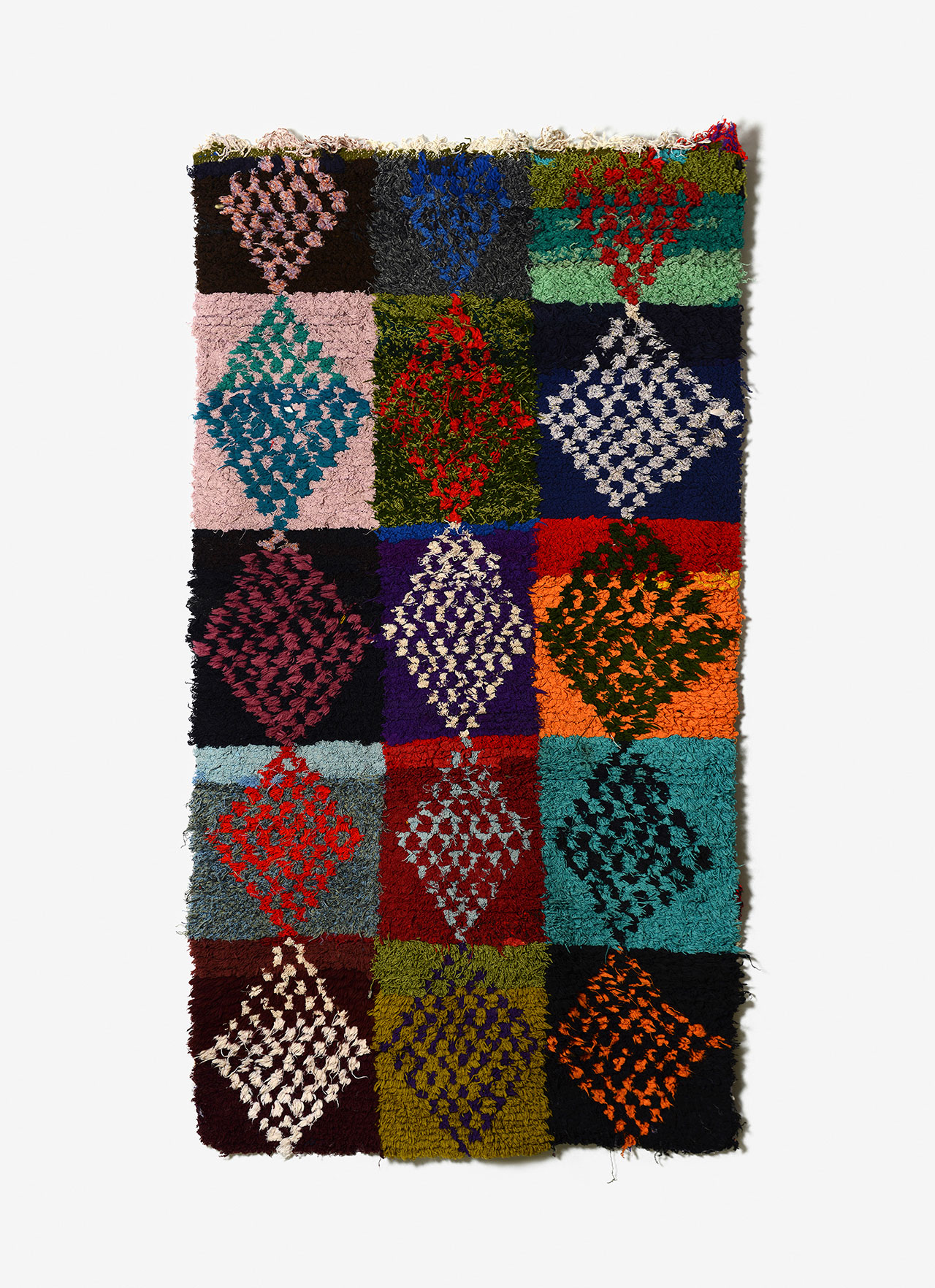
Touda Boumrour, Lahfira, rug, 1994. Photo © Rémi Boissau - Ville de Clermont-Ferrand.
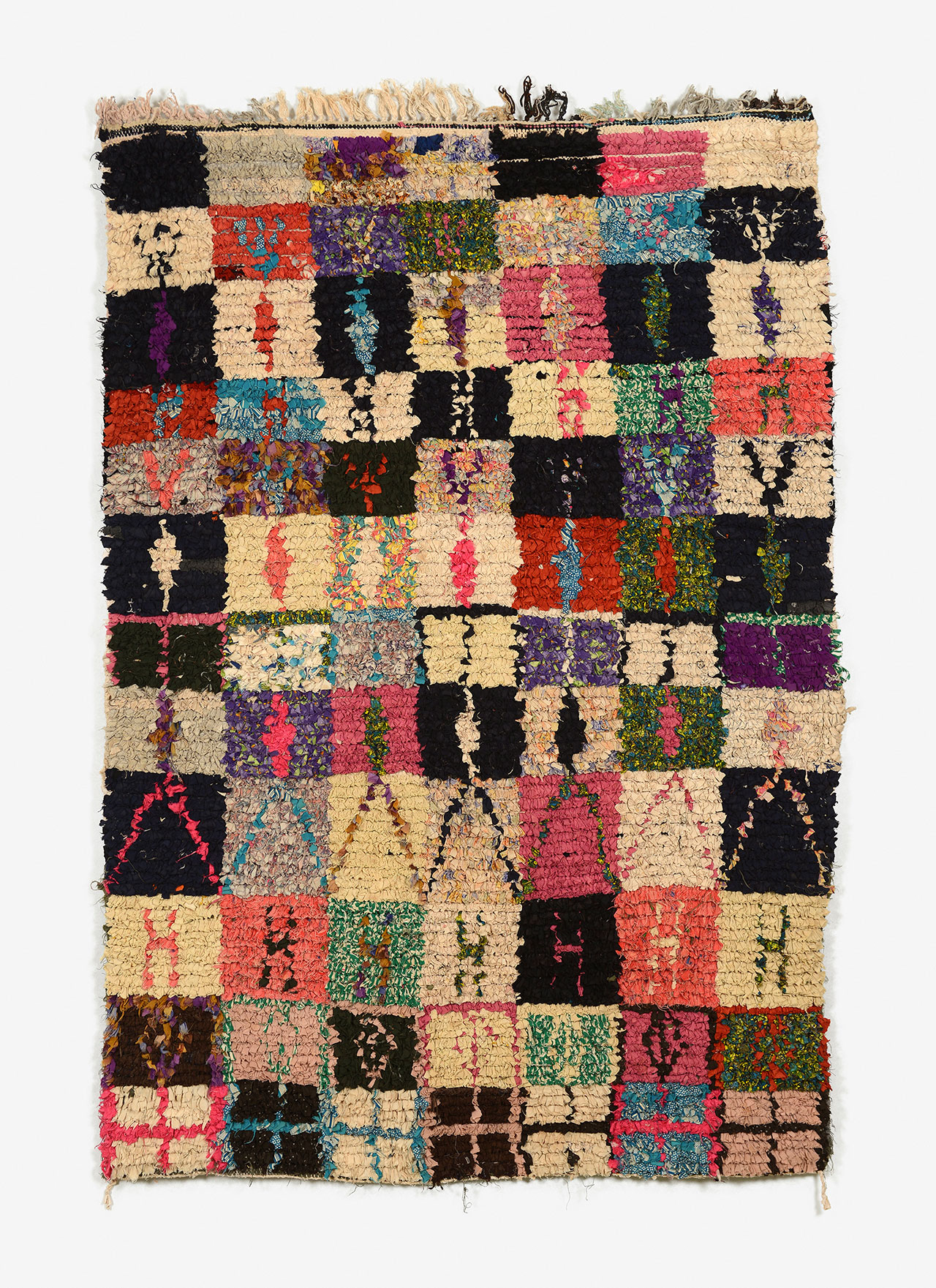
Zahra Fatah, Aferdou, rug "Boucharouette", 2000-2009. Photo © Rémi Boissau - Ville de Clermont-Ferrand.
Although there is nothing uniform in the patterns that comprise the carpets warp and weft, there are some almost animated, simple forms that make recurring appearances, regardless of the carpet's final size and the textiles used. For instance, some carpets are very nubby; their featured mish-mashed pattern obviously the result of necessity depending on the material that was at hand to weave into the loom as the weaver went about her task. With that being said, some carpets feature more grid-like patterns, such as colorful checkerboards or diamond grids which are obviously the result of careful planning on the part of the weaver in terms of the care she took in the carpet's creation which is more than visible in the finished product in terms of patterns and colourways. There is also a modern addition to the more time-laden patterns: the appearance of the last letter of the Berber alphabet, the "yaz," utilized as a pattern in the weavings which they say is used as "a symbol of the tribe's new self-conception and pride in being Berbers."
Whatever the reason, it is fittingly intriguing.
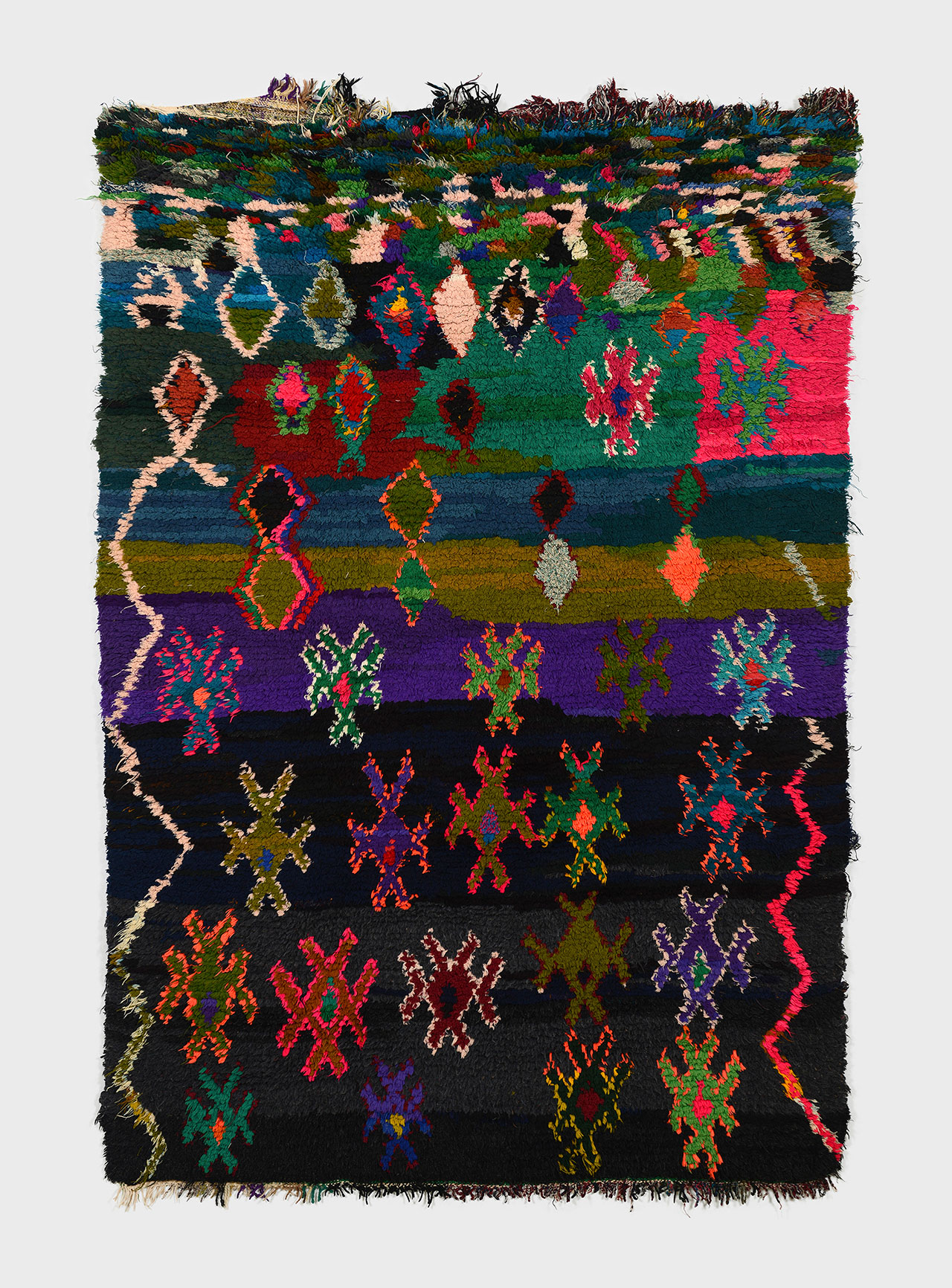
Fatima Oumharch, Tafraout, rug, 1990. Photo © Rémi Boissau - Ville de Clermont-Ferrand.
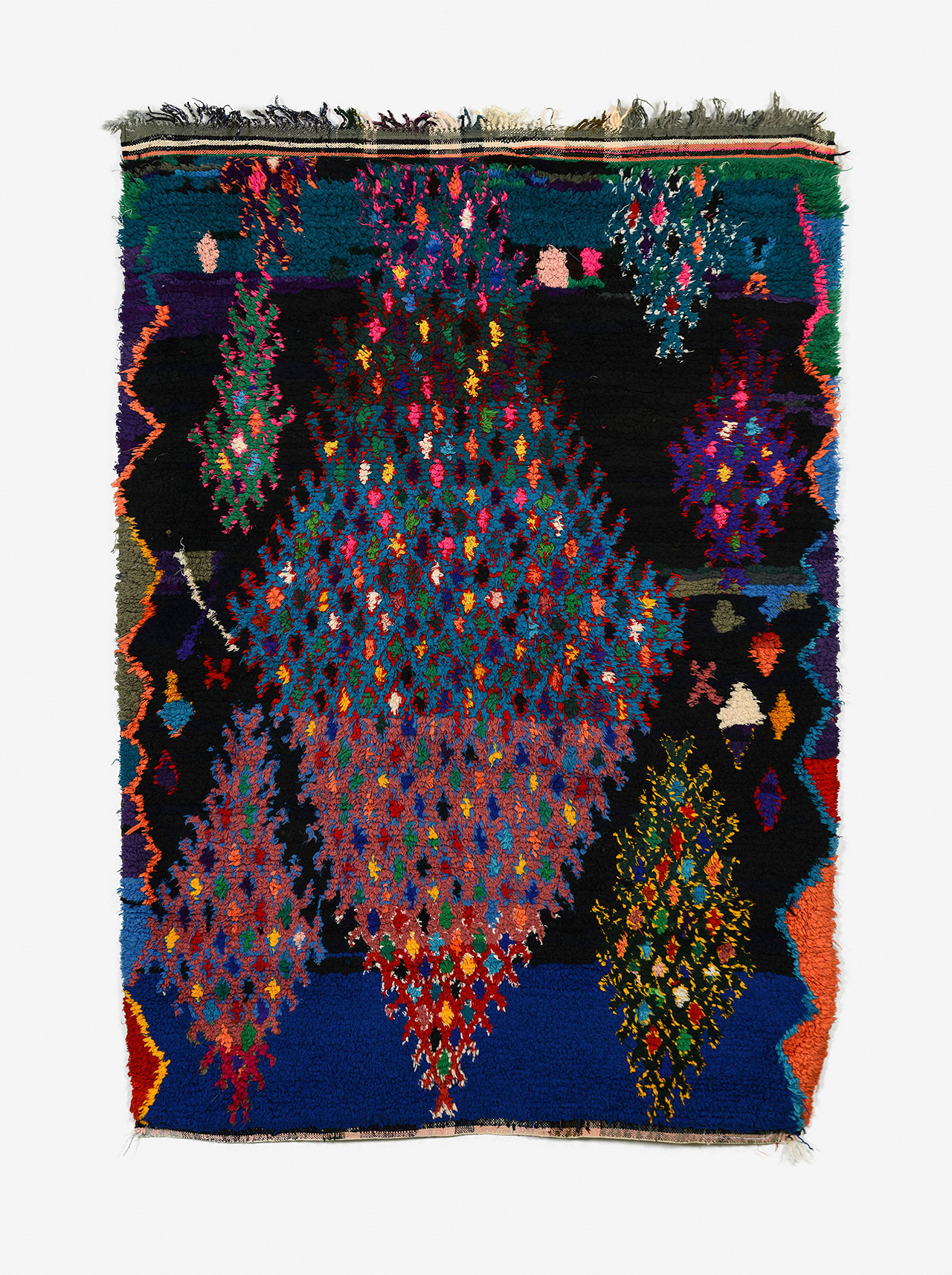
Fatima Oumharch, Tafraout, rug, 1990. Photo © Rémi Boissau - Ville de Clermont-Ferrand.
Ultimately, these carpets’ patterns are like a language that was developed through the loom and thread--a societal story that is silently told in the finished items. They prove, once again, how art transcends its creators, the area of its birth and even the reason it was made in the first place to become something that everyone can understand, a visual language superior to anything that can be expressed with words.

Fatima Oumharch, 2012-2013. Photo © Serge Anton.
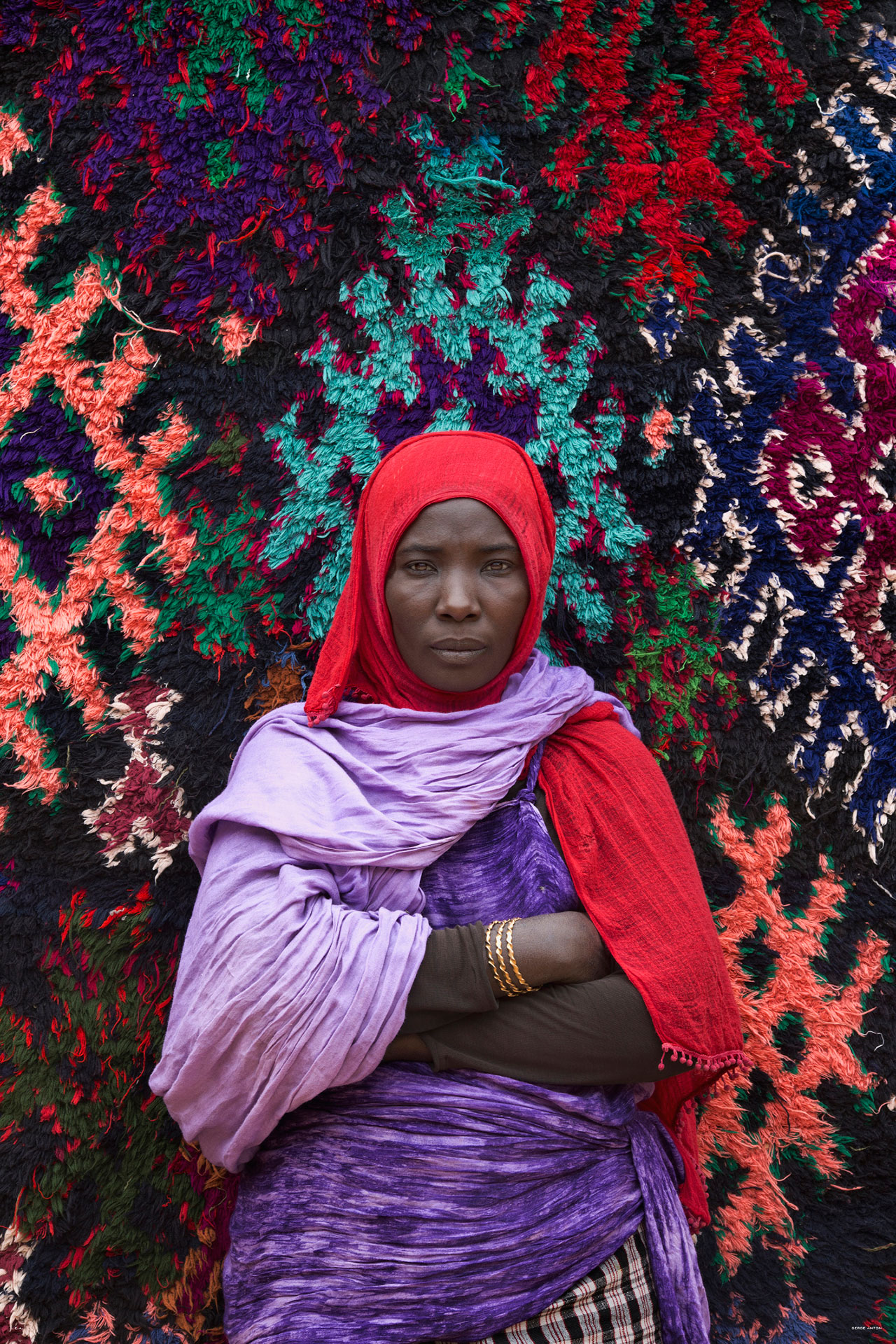
Aïcha Salmi, 2012-2013. Photo © Serge Anton.
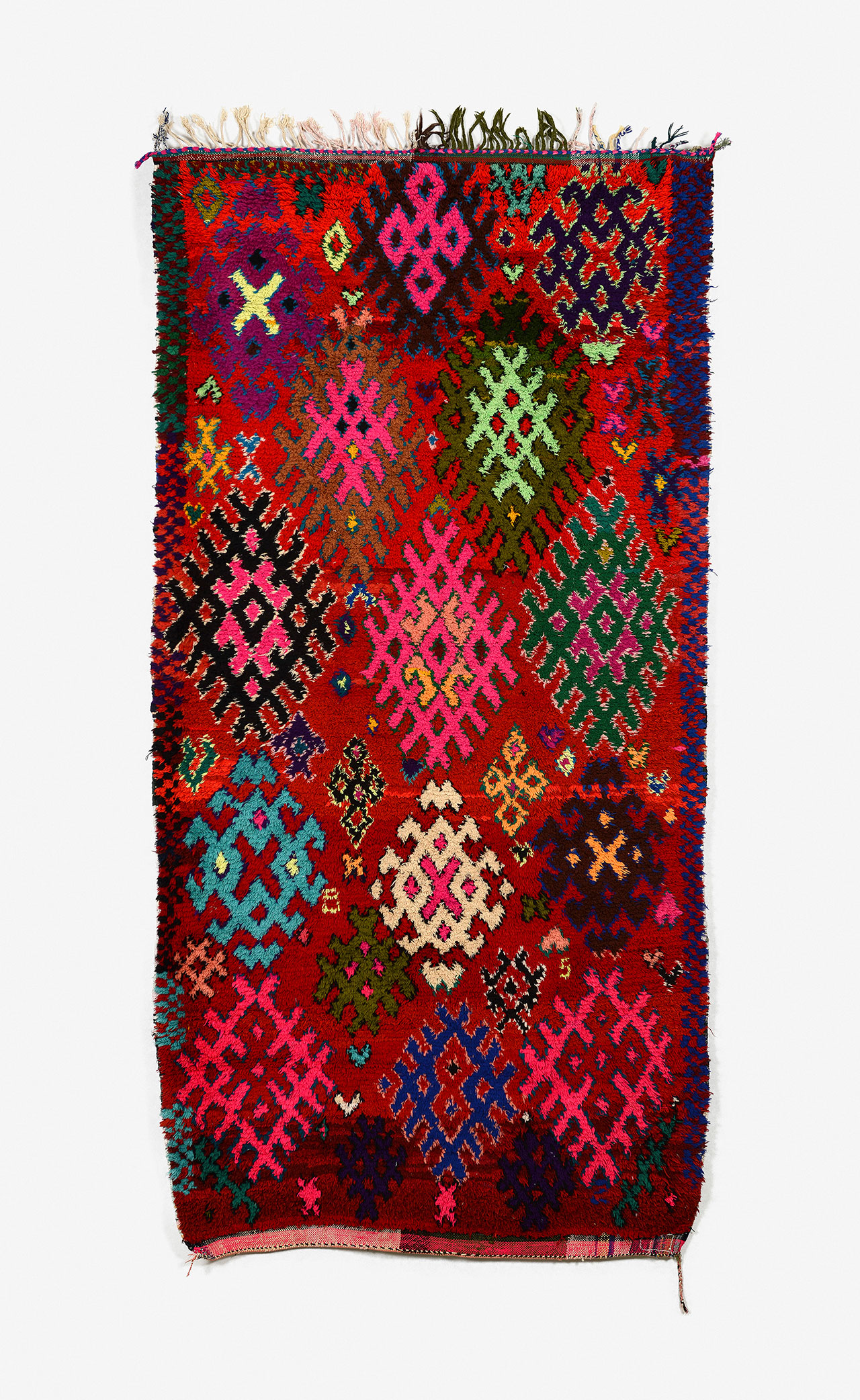
Aïcha Salmi, Ighfnighir, rug, 1997-2000. Photo © Rémi Boissau - Ville de Clermont-Ferrand.
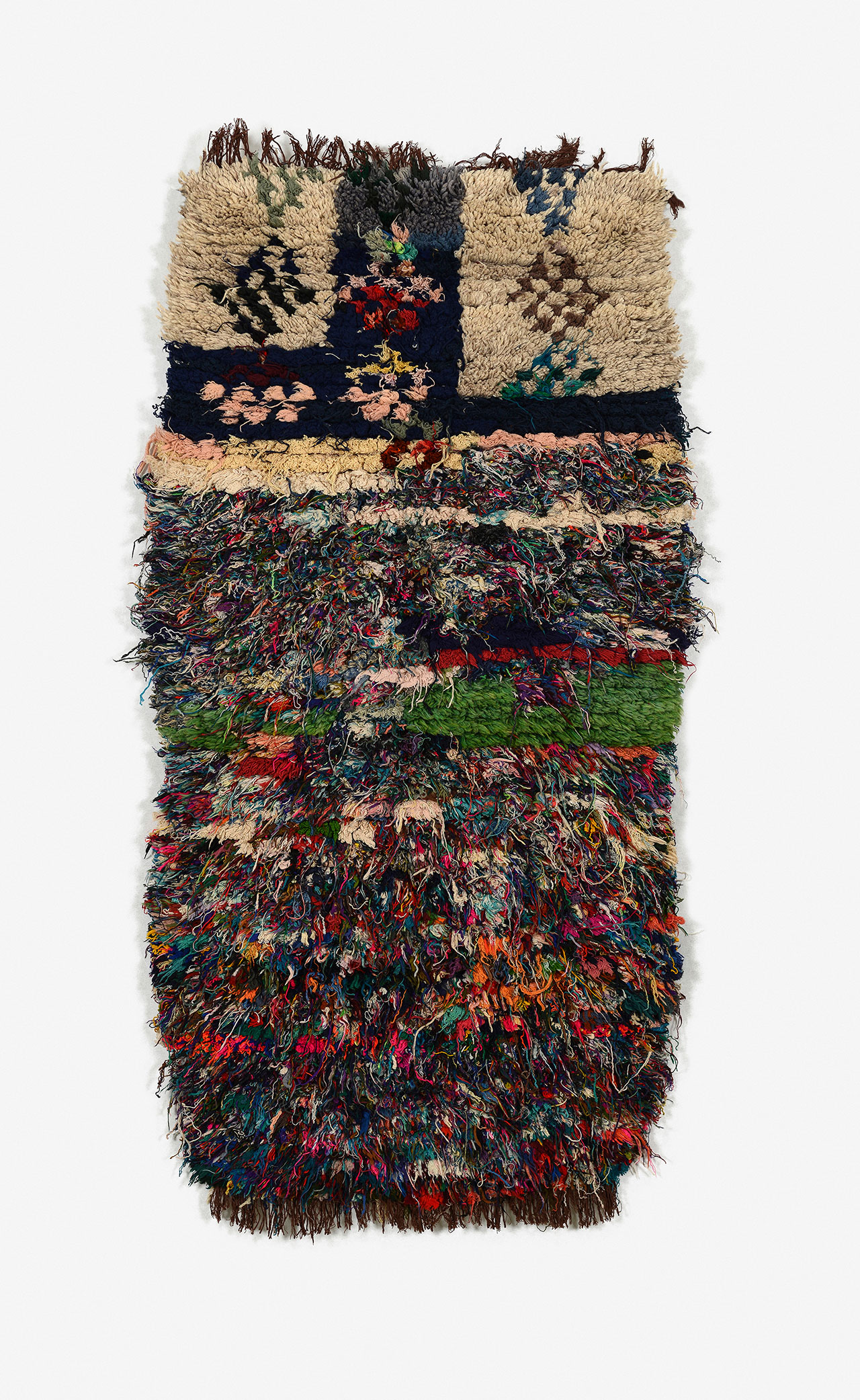
Aïcha Salmi, Ighfnighir, rug, 2000-2009. Photo © Rémi Boissau - Ville de Clermont-Ferrand.
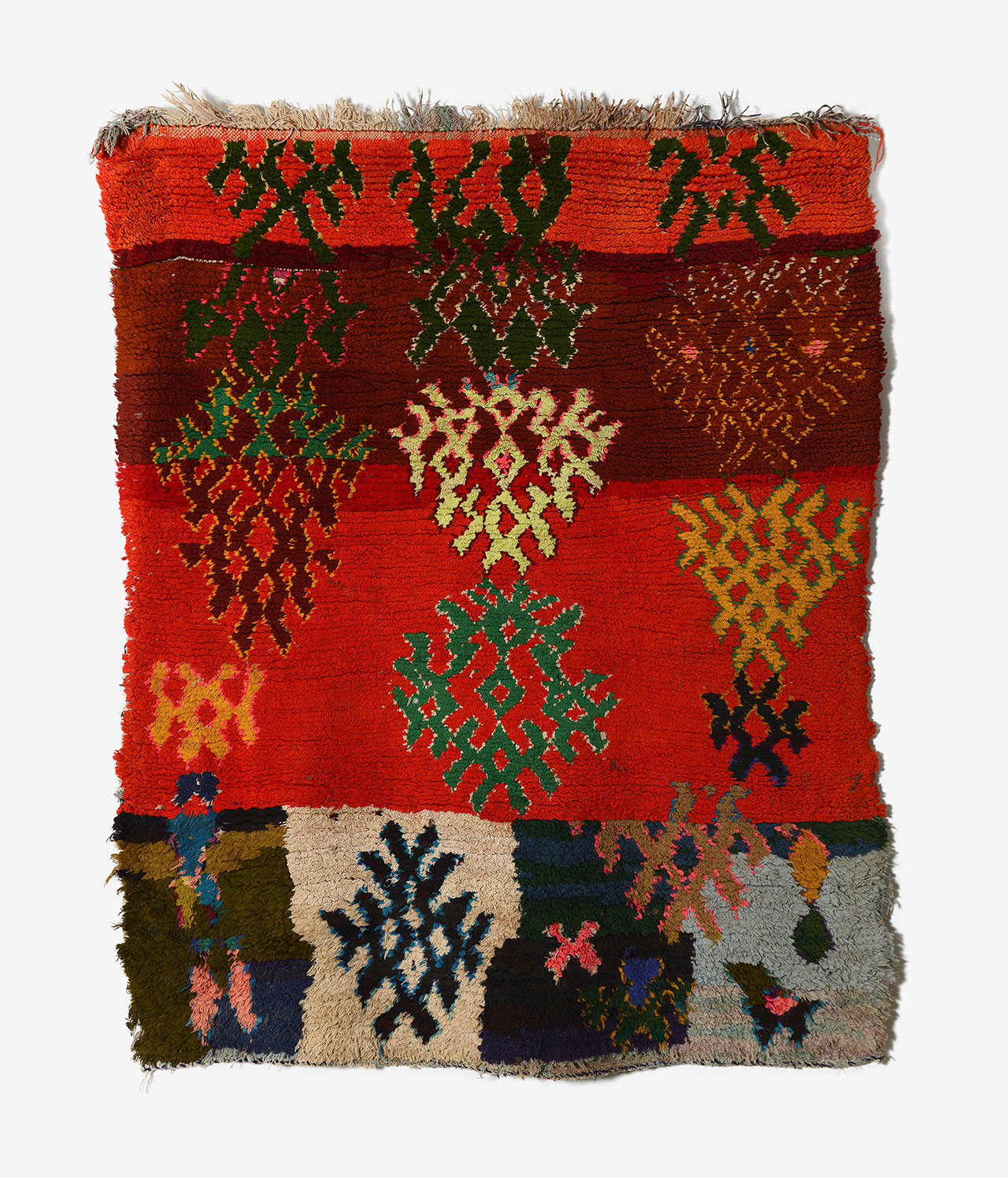
Setra Aït Hammi, Lahfira, rug, 2000-2005. Photo © Rémi Boissau - Ville de Clermont-Ferrand.
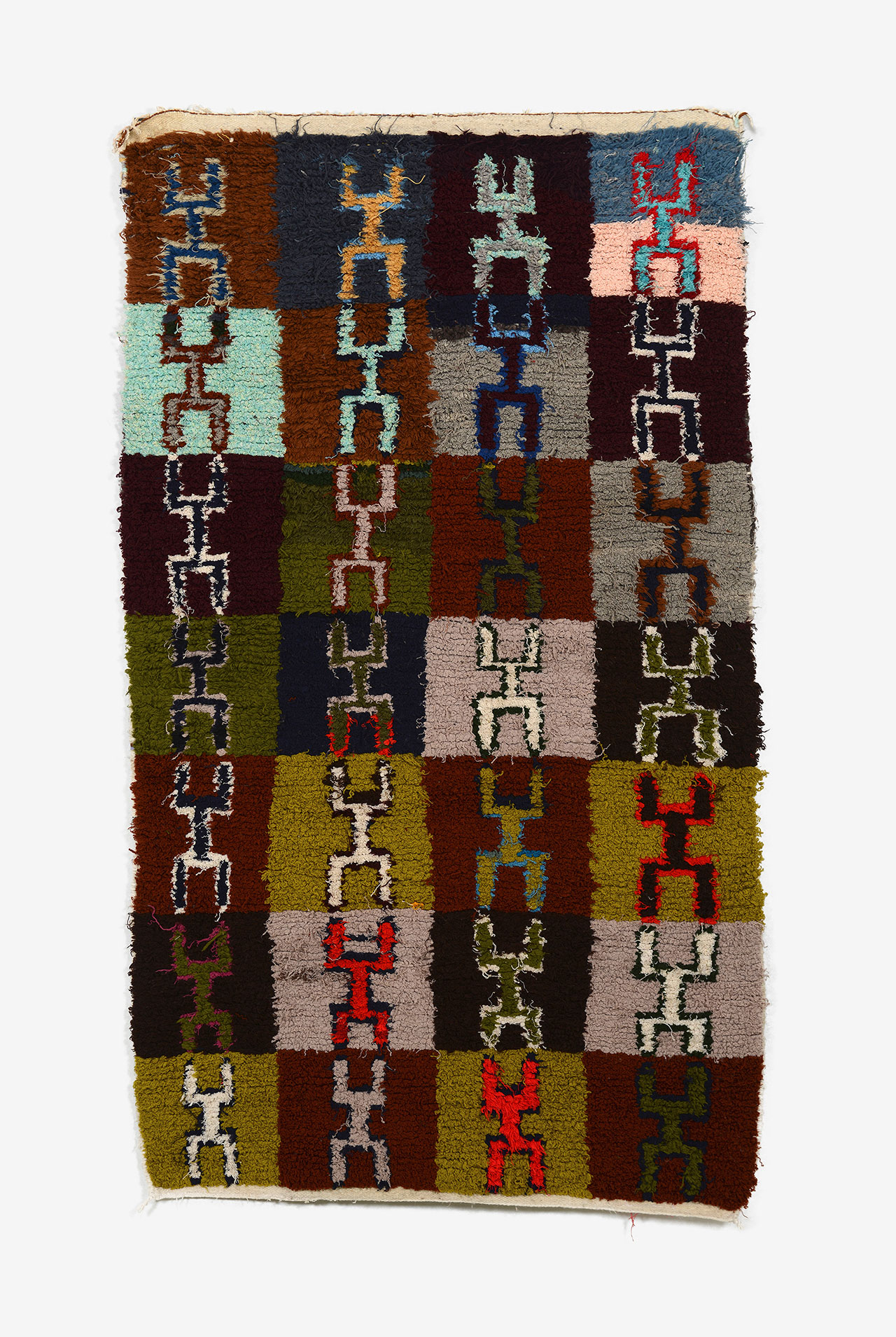
Zahra Khouya, Tazoulaït, rug, 2008. Photo © Rémi Boissau - Ville de Clermont-Ferrand.
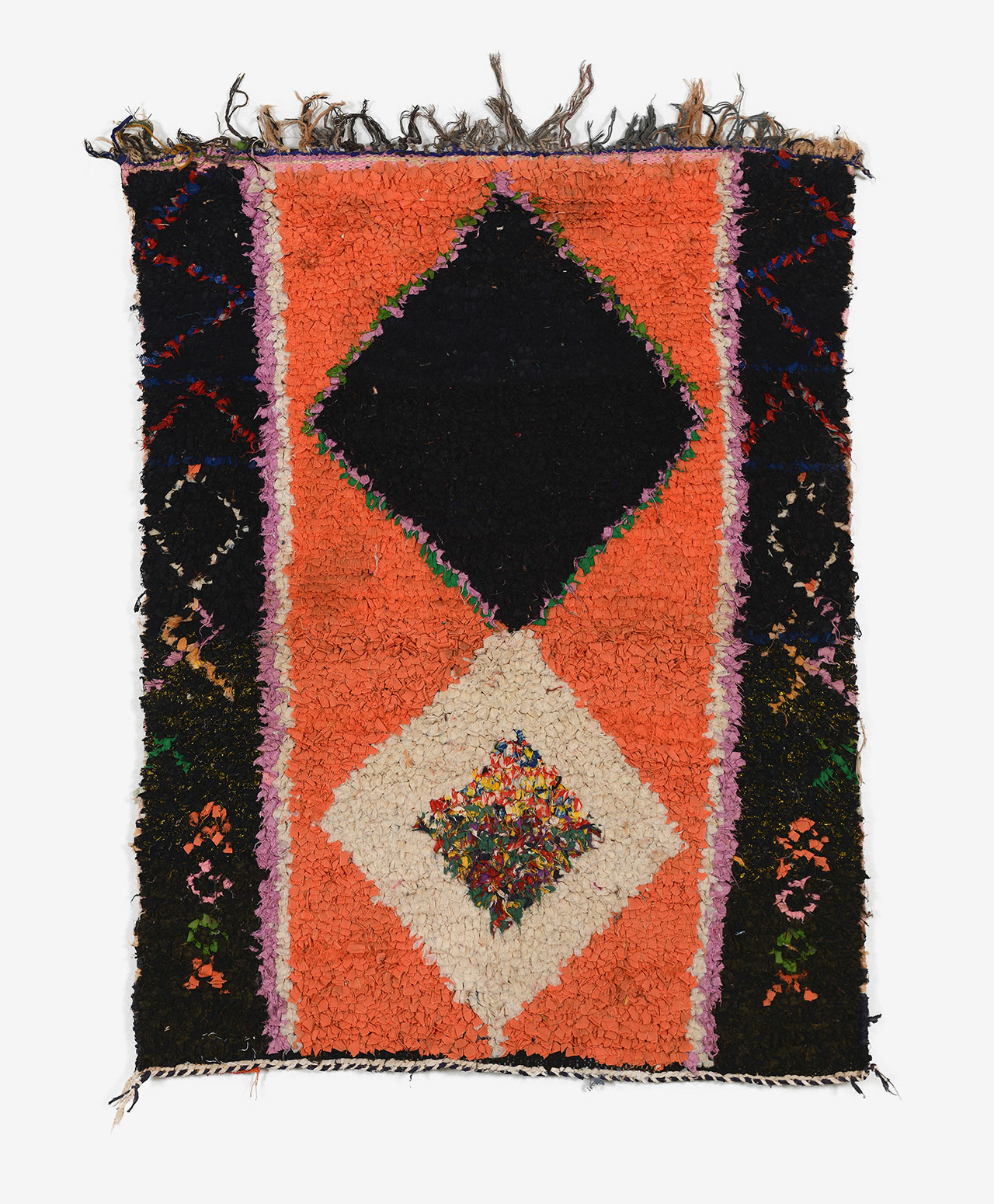
Zahra Bouychou, Aferdou, rug "Boucharouette", 2000-2009. Photo © Rémi Boissau - Ville de Clermont-Ferrand.
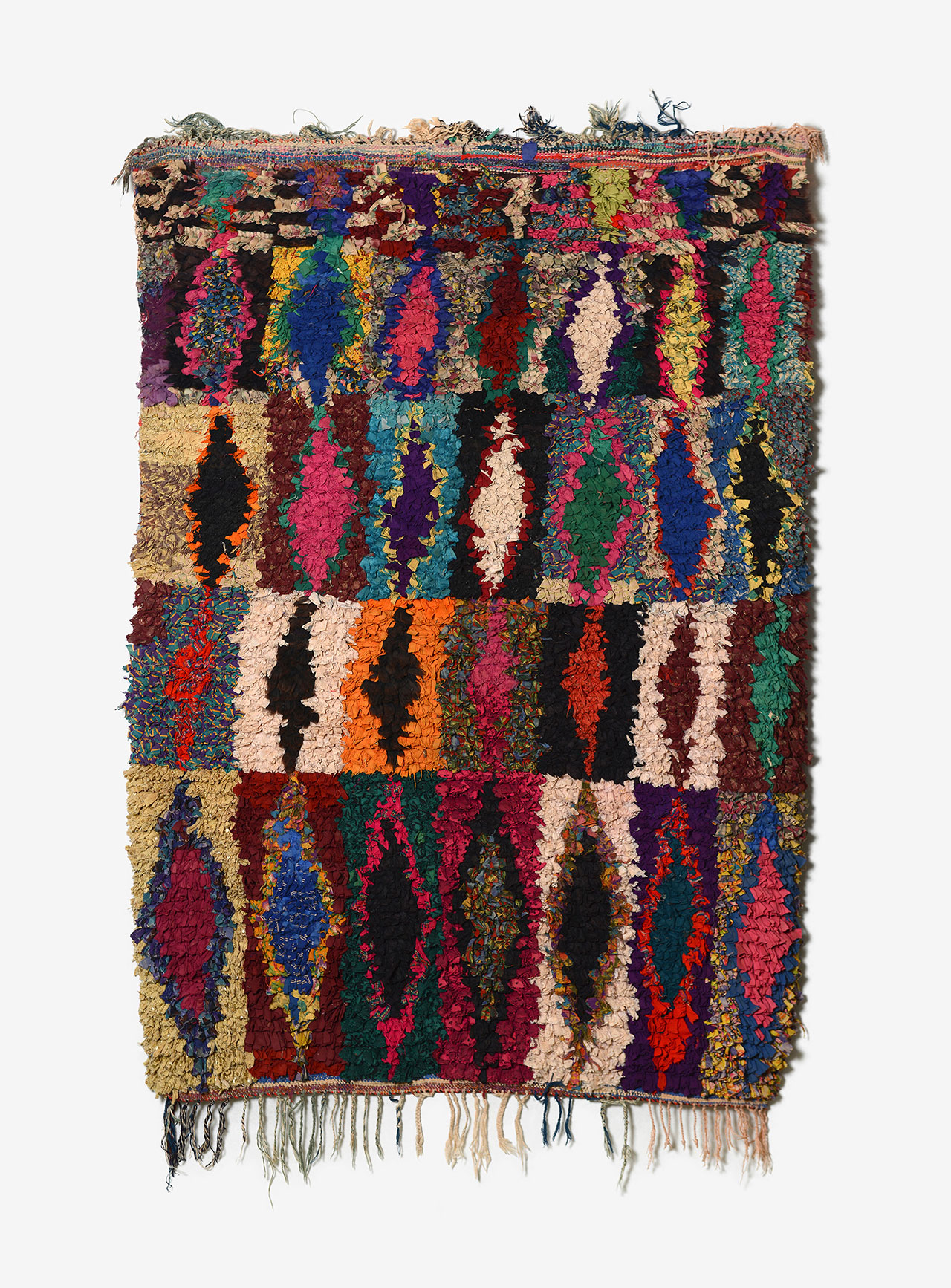
Zahra Bouychou, Aferdou, rug "Boucharouette", 2000-2009. Photo © Rémi Boissau - Ville de Clermont-Ferrand.















